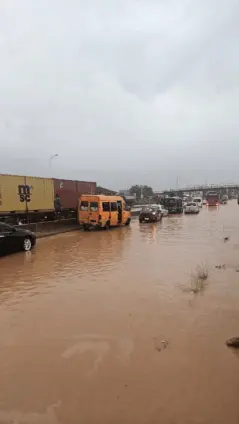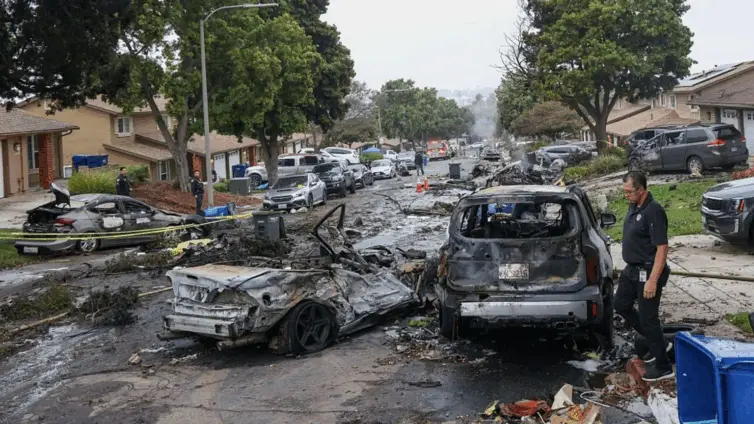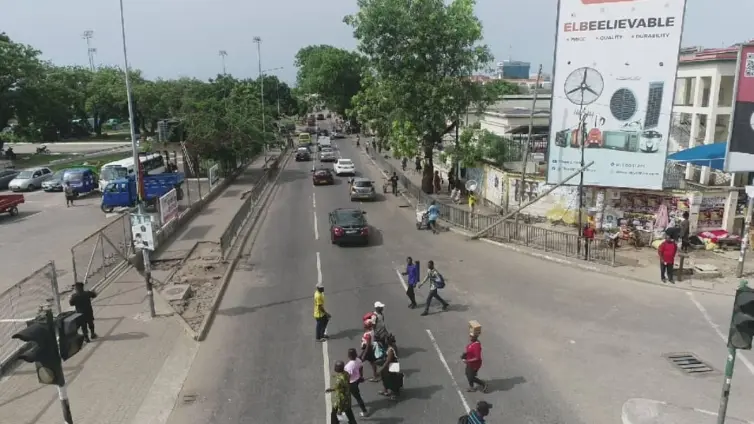A torrential downpour swept through Accra on Sunday, May 18th, triggering anxieties familiar to residents of the Ghanaian capital. As floodwaters rose in several communities, the National Disaster Management Organisation (NADMO) mobilized its resources to respond. Despite the widespread disruption and concern, NADMO has confirmed that no casualties were recorded as a result of the Accra flooding. The agency, responsible for disaster preparedness and response, received a high volume of distress calls throughout the day.
NADMO’s swift response aimed to provide immediate relief and assess the extent of the damage caused by the heavy rainfall.
Following Sunday’s intense rainfall, NADMO deployed emergency teams to various affected areas, including Adenta, Tema, and Kaneshie. The primary objective was to provide immediate relief to residents and to conduct a thorough assessment of the damage inflicted by the floodwaters.
Mohammed Jafaro, Chief Disaster Control Officer, confirmed the absence of fatalities in an interview with Channel One TV. “We have not recorded any deaths,” Jafaro stated, emphasizing the agency’s relief that no lives were lost despite the severity of the Accra flooding. He also noted the significant volume of distress calls received, highlighting the widespread impact of the rainfall across the city.

The recurrent flooding in Accra is a complex issue stemming from a combination of factors, including inadequate drainage infrastructure, sanitation challenges, and engineering defects.
NADMO has consistently highlighted the critical need for improved drainage systems in many communities. According to Mohammed Jafaro, “Most of the problems we have observed are that there is a lack of drainage in some communities…” This deficiency leaves areas vulnerable to rapid water accumulation during heavy rainfall.
Sanitation issues, particularly the improper disposal of waste, exacerbate the problem. “…some of the areas are filled with filth…” Jafaro explained, noting how the accumulation of trash blocks waterways and impedes the flow of rainwater, contributing to flooding. Furthermore, engineering defects in infrastructure design also play a role, with Jafaro pointing out that “In some of the areas, we also have engineering defects,” which further compound the vulnerability to flooding.
| Cause | Description | Potential Solutions |
|---|---|---|
| Inadequate Drainage | Lack of sufficient drainage systems in many communities. | Invest in and maintain comprehensive drainage infrastructure. |
| Sanitation Issues | Filth and improper waste disposal blocking waterways. | Improve waste management practices and enforce sanitation regulations. |
| Engineering Defects | Poorly designed infrastructure contributing to flooding. | Address and rectify engineering flaws in existing infrastructure. |
NADMO urges residents to exercise vigilance during periods of heavy rainfall and to take necessary precautions to ensure their safety. It is crucial to avoid flood-prone areas to minimize the risk of injury or property damage.
Residents are also encouraged to report any incidents or potential hazards to NADMO through the agency’s emergency hotline or social media channels. Prompt reporting can help NADMO respond effectively and mitigate the impact of flooding in Accra.
Despite the significant Accra flooding experienced on Sunday, NADMO has confirmed that no fatalities were recorded. The agency continues to emphasize the importance of vigilance and adherence to safety guidelines during the rainy season. Staying informed about weather updates and following NADMO’s advice remains crucial for residents to protect themselves and their property from the impact of Accra flooding.
Image Source: MYJOYONLINE




















